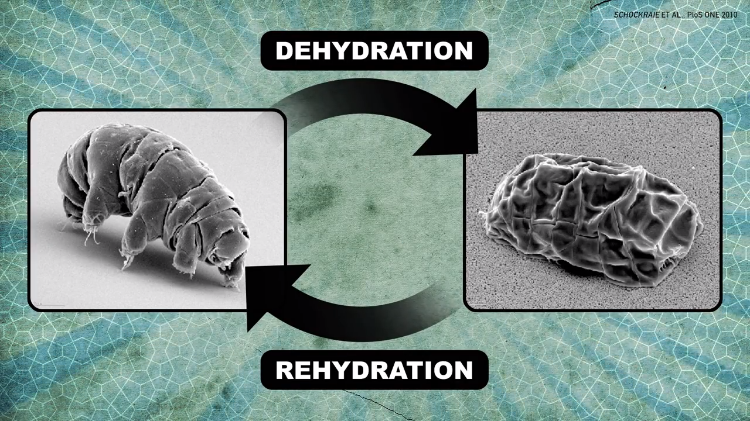next:
back:

why are tardigrades interesting?
Tardigrades are very well known for their ability to survive everywhere, because they can enter a cryptobiotic state - theirs specifically called anhydrobiosis – where all metabolic processes are ceased, which protects them against the detriments of dehydration.
Their resistance against lack of water also gives them resistance to extreme temperatures, radiation, and chemicals (although not all species of tardigrade show equal resistance to the same physical factors.)
Anhydrobiosis works by tardigrades expelling water from their bodies and retracting their limbs, shrinking into tiny dry balls called "tuns," only to return to normal once external conditions have improved.
Tardigrades are able to spend a decade or more as dried-out tuns.
This is made possible by a protein found only in tardigrades called damage suppression protein (Dsup), that form glass-like structures to preserve dehydrated cells and protect DNA.
